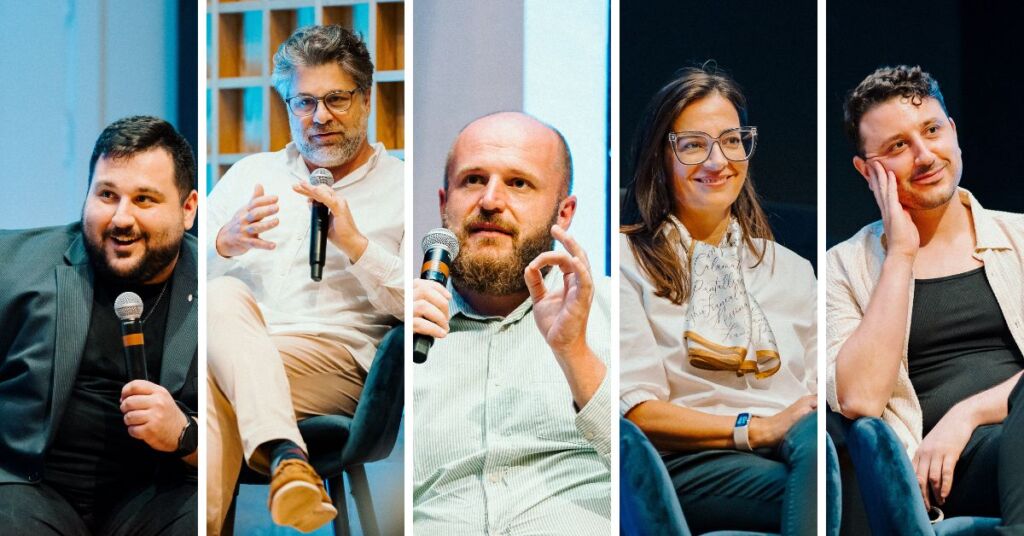Technology – Friend Or Foe? Exploring Digital Design During designMT’s Debate

A lively debate unfolded on the topic of Digital Design: Technology – Friend or Foe?, yesterday, at the designMT expo.
Moderated by our very own Head of Content David Grech Urpani, the discussion brought together experts from various fields to explore the impact of digital tools, AI, and advancements like 3D printing on the creative process.
The panel examined whether technology is a help or hindrance for designers and creatives, with insights into the future of design.
View this post on Instagram
Opening the Debate
David kicked off the debate by acknowledging the undeniable transformation technology has brought to the design process, prompting the panel to discuss how these changes are reshaping their industries.
Adapting to Digital Design
Veteran designer Stephanie Borg shared her experiences from a time before digital tools, recalling when most of her work was done manually. While she embraces technology, she emphasises staying true to traditional roots, starting each project with a concept, pencil, and paper.
Ceramic Artist Nico Conti recounted his initial reluctance towards 3D printing until a system glitch sparked his curiosity. Over time, he learned to embrace the ‘mistakes’ the technology produced, turning them into creative opportunities.
Matthew Pullicino, from Stargate Studios, highlighted the democratisation of technology, noting how powerful tools are now available to everyone, sometimes even for free. He emphasised how technology is now as accessible as a smartphone, with barriers to entry rapidly disappearing.
Organic vs. Forced Adoption of Tech
The panel was asked if the integration of technology into their industries felt organic or forced. Architect William Bondin from I+A Studio pointed out that technology is becoming embedded in our lives, as he witnessed a six-year-old mastering software he first encountered in his 20s. Bernard Montebello from Malta Digital Innovation Authority, added that while the adoption of tech is often organic, businesses are pressured to adapt or risk falling behind.
Do We Have the Skills?
When discussing whether the necessary skills to use tech are present, Matthew observed that the fear of failure has diminished. With tutorials and self-learning resources widely available, more people are experimenting with design software.
Bernard mentioned the upskilling efforts by the MDIA (Malta Digital Innovation Authority), which aims to meet industry demands through training programs and funding.
The Role of the Designer
As technology becomes more accessible, the panel debated whether the significance of the designer is diluted. William argued that while technology liberates designers from mundane tasks, it doesn’t diminish their value.
The designer’s focus remains on the why, rather than the how. Stephanie echoed this sentiment, asserting that an artist’s unique voice will always stand out, regardless of the tools they use.
The Future of Tools
Addressing whether technology will ever evolve beyond being just a tool, Bernard stressed that the human element behind tech will always remain crucial. Nico raised concerns about the growing dependency on technology, suggesting we might be losing the ability to function without it.
Time vs. Value
The panel also tackled whether something has more value if it takes more time to create. William emphasised that art doesn’t have to be oppressive or time-consuming to be valuable, while Matthew noted that technology allows for the revival of past creations and experiences in new, innovative ways.
What’s Most Important – Idea, Tool, or Product?
The debate touched on the importance of ideas, tools, and products. Williams likened technology to a hammer: once you have it, everything can start to look like a nail. He recognised the balance between these elements, while Bernard added that community can significantly influence the interplay between them.
Opportunities for Maltese Designers
Matthew highlighted the opportunities that technology brings to Maltese designers, allowing them to push boundaries and tackle larger challenges. His team, for instance, creates virtual spaces that aim to replicate real life, showing how technology is blurring the lines between the physical and digital worlds.
Challenges of Integrating New Tech
Stephanie and Nico pointed out time constraints and the difficulty of keeping up with rapidly evolving tools. William argued that it’s impossible to master everything, so it’s better to focus on excelling in one area. Matthew shared his strategy of allowing younger team members to experiment with new technologies, which he then tries to integrate into his company’s processes.
The Next Big Steps in Tech
The panel closed with a discussion on the future of design tech. Matthew talked about intellectual property and its potential across different verticals. Bernard highlighted emerging trends like AI, VR, AR, and Web 3.0, while William spoke about digital twinning and the need for infrastructure to support future technology.
While comments and questions from the audience were being taken, Elton Micallef, CEO of the Malta Crafts Foundation, asked whether manual skills should still be taught alongside tech. The panel agreed that traditional skills are essential, as they form the foundation that allows designers to fully understand and manipulate their materials.
The debate concluded with the consensus that while technology offers incredible possibilities, it’s the human creativity and unique voice behind the tools that will always define the future of design.
